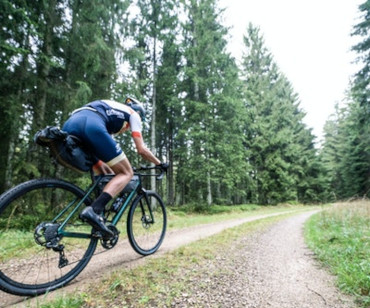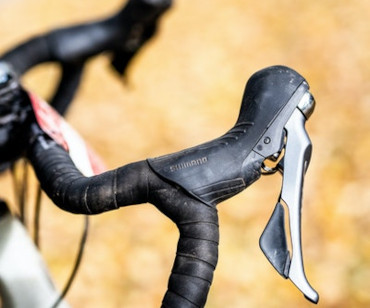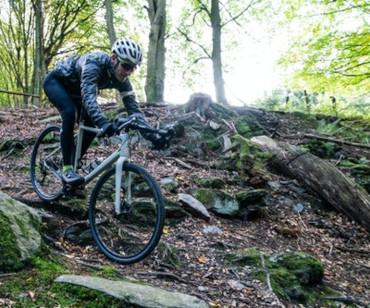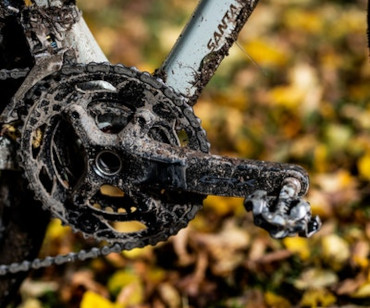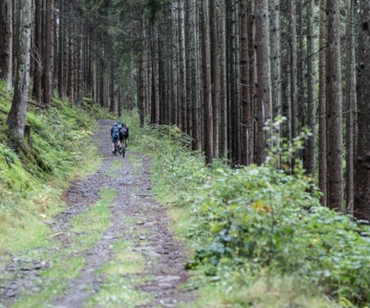BY: KATHERINE MOORE
Katherine, member of the Shimano Gravel Alliance, is a gravel and bikepacking rider who judges her rides by stoke level, rather than speed. Her off road career started at the deep end with a three day tour of the Scottish Cairngorms, and she’s barely gone back to her road bike since. Katherine ticked off the bucket-list Dirty Kanza 200 in 2018 and spent most of her free time in 2019 at a touring pace whether racing the Catalunya Trail or discovering new routes with friends.

Drop bars, rigid frames and narrow tyres; road bikes and the rapidly growing offering of gravel bikes certainly share a lot in common. So what exactly are the differences, and why might you consider adding a gravel bike to your collection?
Here we talk through the design and build considerations that make gravel bikes perfect for the purpose, from groupset choice to tyre clearance, geometry, and finishing touches.
1. GROUPSETS & GEARING
Whilst traditional road cycling groupsets might be okay for some gravel riding, you’ll typically find you want more gears for riding off road. The ideal gravel ratio lies somewhere between road and mountain biking - with more easy gears to counter the loss of traction on loose and uneven surfaces, whilst maintaining gearing options for faster linking road sections and descents.
Besides gear demands, there’s also a trend for simplicity, where single chainring technology from the mountain biking world has been warmly welcomed. Add in the need for powerful and responsive braking off road on road-style levers, and soon it becomes apparent that something new altogether is needed.
Enter stage left Shimano GRX, the world’s first gravel-specific family of components. Borrowing many features from mountain bike technology, Shimano has produced a whole range of options with the needs of the gravel rider at the fore, not excluding dropper posts and Di2 electronic gearing!
Switching to GRX from a road-specific groupset brings a few instantly noticeable differences, such as a wider range of gears in both single and double chainring options, more ergonomic shifter hoods and, at the top level, brakes with more responsive Servo Wave power.
Choose from single drivetrains with 40 or 42 tooth chainrings, which can be paired with cassettes up to 11-42 tooth, or double drivetrains (either 46/30T or 48/31T) with a cassette as big as 11-34T on the back.
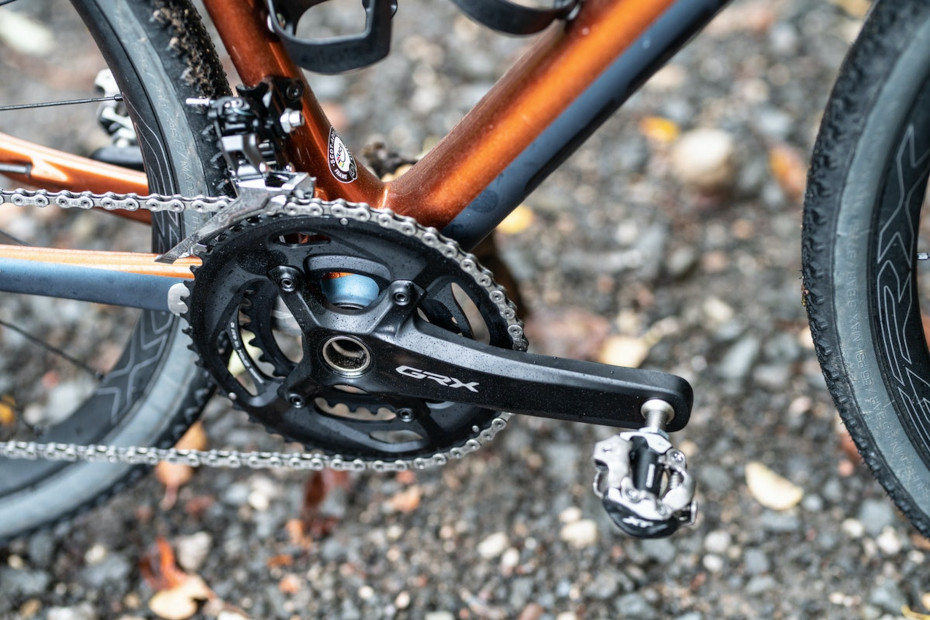
The Servo Wave action in those GRX 800-series hydraulic brakes brings the pads rapidly into contact with rotors to deliver more power and control faster than typical road disc brakes. Paired with 160mm rotors it gives the ability to modulate (feather) the brakes, or to scrub speed faster when your enthusiasm gets the better of you.
2. TYRE CLEARANCE
Tyre clearance is the one feature that can make or break a frame’s suitability for gravel riding. Some road frames have a good amount of space between the forks and stays to accommodate chunkier tyres. Whilst this can be a good substitute if you’re short on cash or space for that ‘N+1’ gravel bike, you’ll want to consider just how wide you can go.
Cyclo-cross tyres (typically 33c) will be fine for some riders in drier, less technical conditions, but wider tyres bring you comfort advantages over rough terrain, and more comfort at lower pressures.
Also the tread needs to be considered. If you’re on the hunt for mud you’ll want a more aggressive tread whereas if you have the need for speed you’ll want a smoother or file tread.
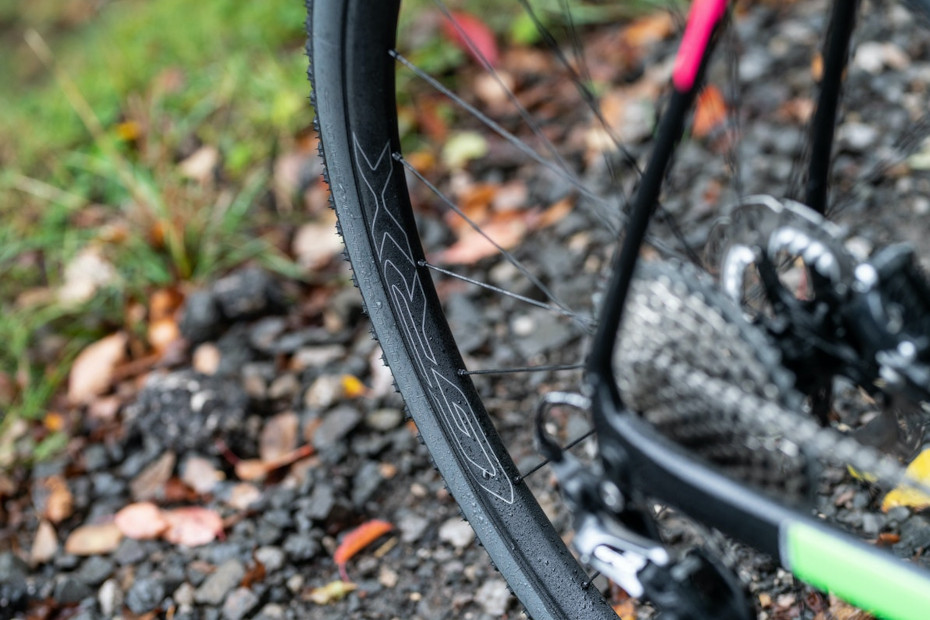
Many gravel bikes have tyre clearance as a key priority, recognising the impact that tyre choice can have on ride quality. To accommodate these wider tyres up to 47mm and beyond, wheels have also evolved and taken a few lessons from mountain biking, including increased rim widths such as on the Shimano GRX wheelsets at 21.6mm. Tubeless set ups are preferred for their puncture resistance and ability to easily run lower pressures without the risk of pinch flats.
Beyond standard 700c wheelsets, smaller diameter 650b are increasingly popular with gravel riders and allow even chunkier mountain biking tyres to be run in many builds for the most rugged and technical rides, as they measure up the same circumference as 27.5 inch MTB wheels. You’ll find wheelset options for both 700c and 650b in the new GRX component family.
3.GEOMETRY
Subtle changes in geometry for gravel or adventure specific bike frames make a surprising difference to their handling and ride feel. These purposely designed bikes are more slack than road bikes, with a less steep headtube angle. Combined with a longer wheelbase, these frame features give more stability when it comes to the more technical terrain and better tracking over loose surfaces.
Gravel and adventure bikes geometries are designed around comfort too, acknowledging that for many, off road exploration may involve long days in the saddle. A more upright position compared to more aggressive road bike set ups helps with this, as well as giving the rider more control over tricky terrain. Apart from tyre clearance, this is another of the main differences between cyclo-cross bikes and gravel bikes: one is designed to be thrashed at full pace for a few hours maximum, the other to be ridden for a day, or even days on end.
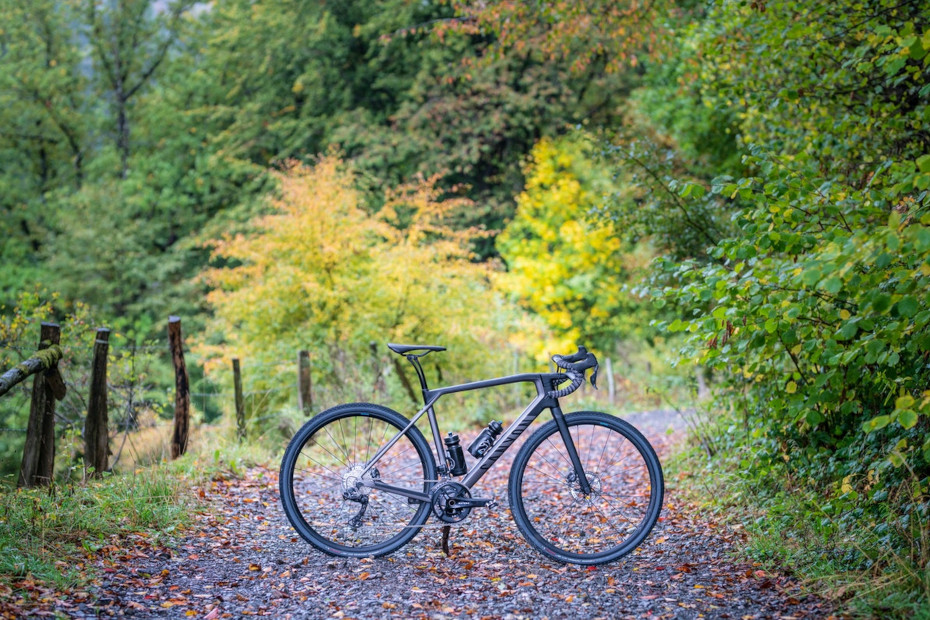
Aerodynamics are much less of an important consideration here, as the challenge of off-road surfaces usually reduces speed to a point where being aero becomes less significant. A good excuse to wear baggies at least!

4.FINISHING TOUCHES
Besides the major differences in frames and groupset choice, there are some more subtle differences that can make a significant impact on how enjoyable your journey off-road will be.
Contact points are well known to be of crucial importance in bike fit; saddle, bars and pedals. Consider that your position for off-road endurance is likely to be less aggressive than an aerodynamic-focussed road fit, so this contact will be different. You might need to choose a different saddle, for example, to compensate for the altered hip rotation resulting from a more upright posture.
Flared bars are a popular feature among gravel circles. These are wider on the drops than standard drop bars, to give a more stable position for technical descents. It’s worth noting that these also tend to give more space for a handlebar bag if you’re stashing kit for a multi day adventure. You’ll find a range of flare angles, with the PRO Discover handlebars available in either 12 or 30 degree flare options.
Whether you choose to opt for flared or not, it’s beneficial to choose slightly wider bars for off road compared to your standard road set-up. Again, this wider stance yields improved stability and control, which tends to be more important than any aerodynamic benefit of a narrower cockpit.
In my opinion it’s imperative that you choose off-road pedals and shoes for gravel riding, as anyone who’s mashed up a pair of road cleats clattering around a tricky obstacle or trudging through a bog will confirm! These shoes feature recessed metal cleats so that walking is much easier, and double sided SPD pedals will help you clip in faster, especially with mud or debris in the mix!
If rough and rocky terrain floats your boat, closer to the MTB end of the gravel spectrum, then you might want to consider a dropper post. This will help you move more freely over your bike on steep and technical terrain without your saddle getting in the way. Dropper posts can even be actuated with the specific drop handlebar shifters such as the GRX left hand STI lever (that’s the ST-RX810-LA if you’re hunting) or the PRO drop bar dropper lever - neat hey!
HORSES FOR COURSES
So despite their apparent similarities, there really are a multitude of differences - not only between road bikes and gravel bikes, but also within gravel biking itself. From long distance, gnarly terrain bikepacking to flat-out off road racing, each build is a testament to the terrain and desired use. What is for sure is that we’ve got a lot to owe to our mountain biking cousins, and that choosing a dedicated gravel bike over a road or cyclo-cross bike can make a whole world of difference when it comes to making the most out of taking the path less travelled.

